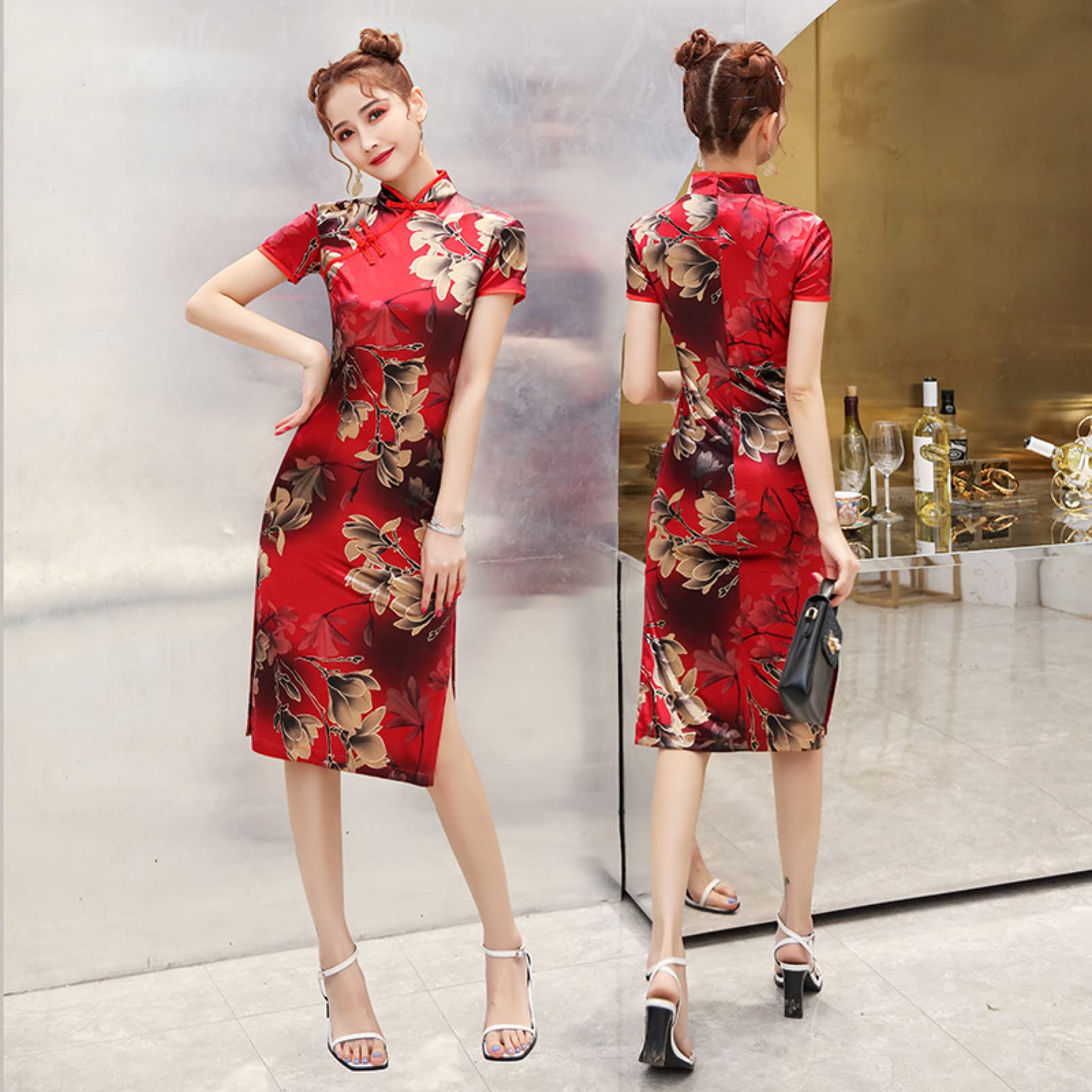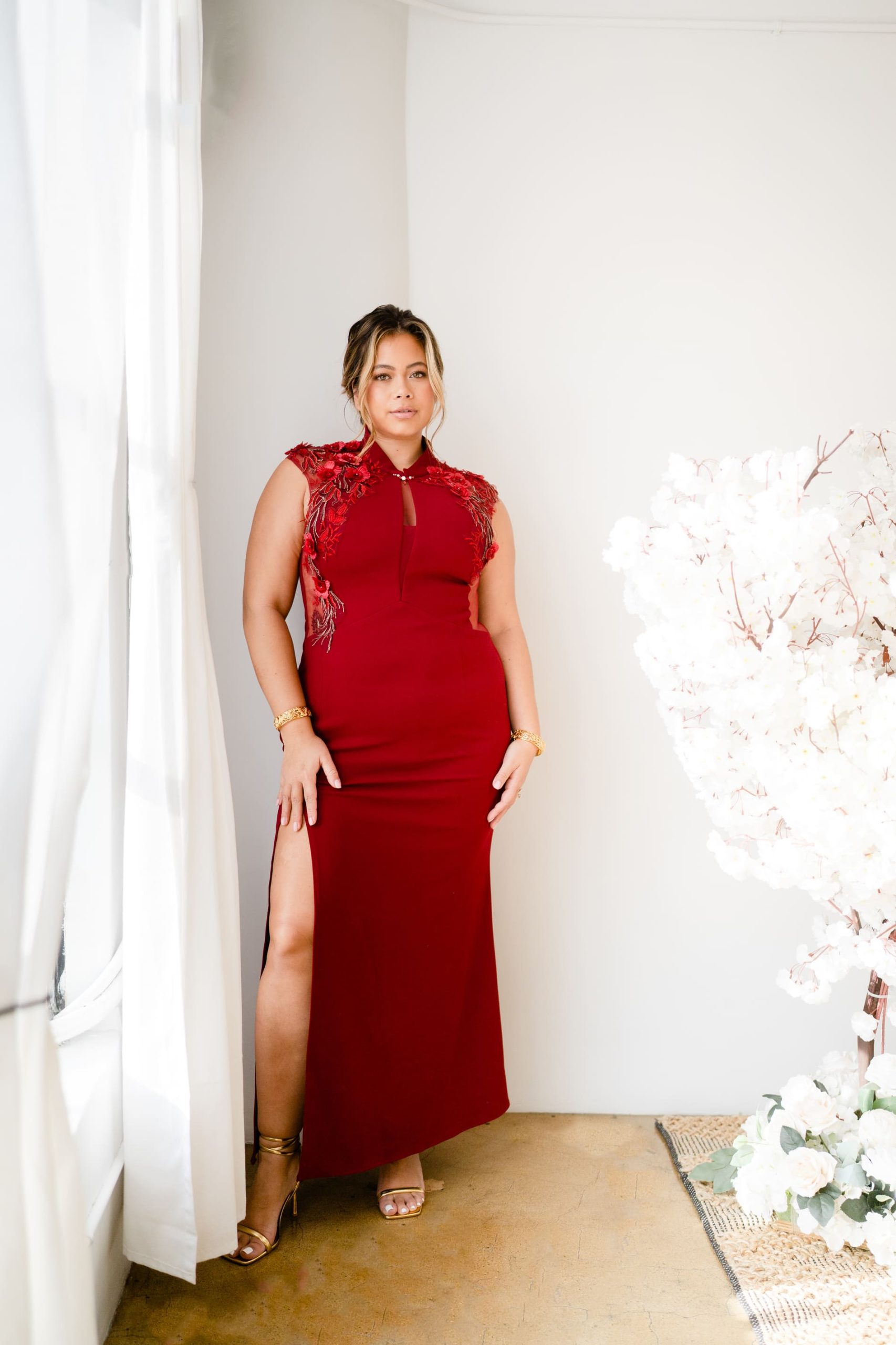Introduction
China, a land steeped in rich history and culture, boasts a fashion legacy that spans millennia. Among the most iconic representations of this heritage are the cheongsam (qipao) and the changshan robe, garments that not only epitomize traditional Chinese elegance but also encapsulate the evolution of Chinese fashion through time.

The Timeless Cheongsam (Qipao)
Originating in the 1920s Shanghai, the cheongsam, or qipao, is more than just a dress; it’s a symbol of sophistication, grace, and the fusion of tradition with modernity. Initially designed as a loose-fitting attire for the Manchu women during the Qing Dynasty, the qipao underwent a radical transformation in the early 20th century. It evolved into a form-fitting silhouette that accentuates the wearer’s curves, featuring high collars, intricate frog buttons, and slits on the sides, revealing a subtle yet alluring glimpse of the leg.
The qipao is renowned for its exquisite embroidery, often adorned with motifs like dragons, phoenixes, or delicate floral patterns, each holding symbolic meanings. The choice of fabric ranges from luxurious silk to lightweight cotton, reflecting seasonal changes and the occasion’s formality. Its versatility allows it to be worn for both casual and formal events, making it a beloved garment not only in China but also globally, where it has become synonymous with Chinese cultural elegance.
The Classic Changshan Robe
Parallel to the qipao stands the changshan, the male counterpart in traditional Chinese attire. Dating back centuries, the changshan is a long tunic that reaches down to the knees or ankles, typically worn with loose-fitting pants. Its straight-cut design, characterized by a high neck collar and often adorned with traditional Chinese buttons, embodies simplicity and dignity.
While less ornate than the qipao, the changshan is no less significant in its representation of Chinese sartorial heritage. Made from materials such as silk or linen, it reflects the wearer’s social status and the event’s formality. Its understated elegance makes it a staple in traditional weddings, festivals, and formal gatherings, preserving a connection to China’s historical roots.
Cultural Significance and Modern Revival
Beyond their aesthetic appeal, the cheongsam and changshan hold profound cultural significance. They represent not only a continuation of ancient traditions but also a celebration of Chinese identity in the face of modernization. In recent years, there has been a resurgence of interest in traditional clothing, with designers reinterpreting these classic garments to suit contemporary tastes.
Contemporary cheongsams now incorporate elements of Western fashion, such as combining traditional embroidery with modern cuts or experimenting with unconventional fabrics. Similarly, the changshan has seen adaptations that make it more wearable in everyday settings, with designers playing with colors, patterns, and silhouettes to create a fusion of old and new.

Influence on Global Fashion and Cultural Exchange
The allure of Chinese dress, particularly the cheongsam and changshan, extends far beyond China’s borders. These garments have significantly influenced global fashion trends, sparking international curiosity and admiration for Chinese aesthetics. Designers from around the world frequently draw inspiration from these traditional styles, integrating oriental elements into their collections, thereby fostering cultural exchange through fashion.
Adaptation and Fusion in Modern Design
In today’s globalized fashion landscape, the cheongsam and changshan are being reimagined and reinvented to cater to diverse tastes and lifestyles. Designers play with the length, cut, and materials of these classic garments, creating fusion wear that merges Eastern and Western fashion philosophies. For example, shorter qipaos with western-style tailoring are popular for their versatility, allowing them to be paired with jeans or heels for a chic, contemporary look. Similarly, the changshan has been transformed into stylish jackets and coats, blending seamlessly into urban streetwear.
Cultural Appreciation and Sensitivity
As traditional Chinese dress gains international recognition, it underscores the importance of cultural appreciation and sensitivity in fashion. Embracing another culture’s attire necessitates understanding and respect for its origins and meaning. This includes acknowledging the rich history behind the cheongsam and changshan and avoiding cultural appropriation by ensuring designs are respectful and accurately represent their heritage.
Sustainability and the Future of Traditional Attire
In an era where sustainability is a growing concern, the revival of traditional dress like the cheongsam and changshan presents an opportunity to promote eco-friendly practices. Many designers are turning to sustainable materials and traditional crafting techniques, which not only reduce environmental impact but also support local artisans and keep traditional skills alive. By incorporating these values, the future of Chinese dress can blend heritage preservation with environmental consciousness.
Promoting Cultural Diplomacy
The global fascination with Chinese dress serves as a powerful tool for cultural diplomacy, fostering mutual understanding and respect between nations. International fashion events, exhibitions, and cultural exchanges that feature traditional Chinese attire contribute to building bridges between different cultures, promoting dialogue, and celebrating diversity.

Influence on Global Fashion and Cultural Exchange
The influence of Chinese dress, particularly the cheongsam and changshan, extends far beyond the borders of China, playing a significant role in global fashion and cultural exchange. As the world becomes increasingly interconnected, these traditional garments have captivated international designers and fashion enthusiasts alike, inspiring numerous reinterpretations and integrations into global fashion trends.
Cross-Cultural Collaborations
Fashion houses around the world have collaborated with Chinese designers to create collections that celebrate the beauty of traditional Chinese attire. These collaborations not only introduce the unique aesthetics of the cheongsam and changshan to a broader audience but also foster cross-cultural understanding and appreciation. Designers blend Eastern and Western styles, using the structural elegance of the qipao and the simplicity of the changshan as a canvas for innovative designs, resulting in garments that resonate across cultures.
Global Fashion Runways
The cheongsam and changshan have made regular appearances on international runways, often reimagined with modern twists. High-profile fashion events like Paris Fashion Week and New York Fashion Week have showcased these garments, where they are transformed with avant-garde cuts, unconventional materials, and bold prints, demonstrating how traditional Chinese elements can seamlessly integrate with modern fashion sensibilities.
Popular Culture and Media Influence
Movies, television shows, and popular media have also played a crucial role in popularizing Chinese dress worldwide. Iconic scenes featuring actresses donning elegant cheongsams in films set against the backdrop of old Shanghai have contributed to the garment’s mystique and allure. Furthermore, celebrities wearing customized qipaos or incorporating Chinese-inspired elements in their red carpet outfits have further propelled these traditional dresses into the global spotlight.
Cultural Pride and Identity
As these garments gain international recognition, they also spark a renewed sense of cultural pride among Chinese communities worldwide. Wearing a qipao or a changshan to cultural events or even in daily life becomes an act of celebrating one’s heritage. This embrace of traditional dress fosters a deeper connection to cultural roots and encourages conversations about the importance of preserving and appreciating diverse cultural identities.

Conclusion
The cheongsam and changshan are more than just pieces of clothing; they are living embodiments of China’s cultural tapestry, reflecting the nation’s history, artistry, and evolving fashion sensibilities. As global appreciation for traditional attire grows, these garments serve as bridges connecting the past to the present, preserving a rich heritage while embracing innovation. Whether gracing the runways of international fashion weeks or adorning brides and grooms at traditional weddings, the cheongsam and changshan continue to showcase the timeless elegance and cultural depth of Chinese dress.

